Awareness & Action in Relationship - Hurt or Heal?
I came home grumpy the other day.
Probably had to do with something I heard on the news… or thinking about some upcoming bills… or maybe an interaction I had at work. By the time I got home, I was tense — and, subconsciously, my body-mind was looking for a way to release that pent-up energy.
Here’s a truism: energy that isn’t released in a healthy way will find its way out — sideways.
And when it comes out sideways, it’s rarely pretty.
As Einstein said, energy cannot be created or destroyed, only transformed.
So when I find myself full of tension, what are my options? How can that energy be transformed instead of discharged destructively?
The Old Way: Reactivity
The habitual pattern — the one I know too well — is to create conflict.
Nothing moves energy and gets the heart pumping like a little frustration.
(Yelling, stomping, slamming a cupboard or two… you get the picture.)
It’s exaggerated, yes — but maybe you can relate.
Releasing tension, even in a sideways way, can feel good for a moment.
But it rarely heals.
The New Way: Conscious Choice
So, how do we transform that same pent-up tension in a way that heals rather than hurts?
The first step is noticing the reactive habit.
Habits bypass our thinking mind — they’re automatic, familiar, and often not so helpful.
I walk in the door…
The place is a mess, dishes in the sink, socks on the floor, music too loud.
So many things I could justifiably be frustrated about.
But this time, I take a breath.
A real one — deep and full.
I drop my backpack, drop my shoulders, and with one slow exhale, I release some of that tension.
In that moment, I’ve shifted from a hurtful reaction to a healing response.
It can be that simple — though, of course, simple isn’t always easy.
Why Breathing Matters
Breathing is the one thing we can do consciously that connects our hardwired subconscious habits to our thinking mind.
When we breathe deeply and intentionally, we interrupt the automatic cycle — that loop between frustration and reaction — and open space for choice.
The breath becomes a bridge from the subconscious to the conscious.
And in that moment, we get to decide: Will this energy hurt or heal?
A Note on Habit and Imprinting
Much of what drives our reactions is ancient — formed when we were very young.
Babies live primarily in delta and theta brain waves, meaning their environments are absorbed without discretion. Everything they experience is recorded directly into the body-mind.
That’s why, as adults, we sometimes hear ourselves and think, “I can’t believe I’m acting like my parents!”
It’s not our fault — it’s our programming. But it is our responsibility to bring awareness and choice to those old patterns.

